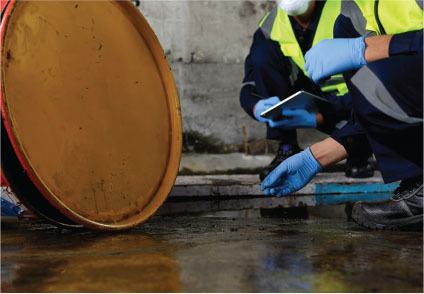May/June 2018
On Ethics: You Be The Judge
You Look Familiar
Situation
Alex Amberson is hired by PXL Engineering to serve as an associate engineer in State Y. Bill Brown, a partner in PXL Engineering, mentors Amberson, and Amberson eventually establishes himself within the firm as a generally well-regarded practitioner. PXL Engineering pays for Amberson’s tuition to obtain a graduate degree, and Brown submits recommendations for Amberson to become licensed as a PE.
Later, Amberson establishes his own engineering practice in State Z and calls the firm “PXL Engineering of State Z.” Amberson’s firm has no affiliation with PXL Engineering located in State Y, but upon investigation, Brown observes that the website developed by PXL Engineering of State Z has statements of principles that are strikingly similar to the ones on PXL Engineering’s website. Brown contacts Amberson about his firm’s name and his use of PXL Engineering’s statements of principles on PXL Engineering of State Z’s website.
What Do You Think?
 Was it ethical for Amberson to call his firm “PXL Engineering of State Z”?
Was it ethical for Amberson to call his firm “PXL Engineering of State Z”?
Was it ethical for Amberson to use similar statements of principles on PXL Engineering of State Z’s website?
What the Board of Ethical Review Said
The issue of giving credit (and responsibility) to the appropriate professional engineers involved in a project goes to the very heart of the professional issues relating to personal responsibility and individual accountability.
As one example, BER Case No. 64-7 addressed assigning personal responsibility. This case involved a PE who was employed as an assistant sanitary engineer in a state health department. In deciding that it was not ethical for the assistant sanitary engineer to sign the name of the district sanitary engineer to engineering documents, the Board noted there appeared to be nothing to indicate any limitation on the ability of the district sanitary engineer to sign and seal the engineering drawings and assume personal responsibility for the work in question. The Board also stated that the thrust of the NSPE Code of Ethics is that individual accomplishments and the assumption of responsibility by individual engineers should be recognized by other engineers. This principle is not only fair and in the best interest of the profession, but it also recognizes that the professional engineer must assume personal responsibility for his decisions and actions.
More recently, BER Case 07-4 addressed the issue of giving credit. In this case, Engineer A, a PE, worked for Engineer B, the owner of a geotechnical/construction materials firm. Engineer A received two engineering excellence awards for projects for which Engineer A had primary design responsibility and signed and sealed the engineering documents. The firm’s website depicted these two projects without Engineer A’s name associated with either one and included photographs of Engineer B and other engineers in the firm beside the project—implying, but not specifically stating, that these individuals were responsible for the projects. The Board decided that (1) in the absence of some compelling reason, it was unethical for Engineer B to fail to include Engineer A in association with the two projects; and (2) in the absence of some compelling reason, it was unethical for Engineer B to include a photograph on the firm website implying that Engineer B and other individuals were responsible for the projects.
While the earlier cases may be somewhat different than the present case, the general reasoning contained in the earlier cases clearly applies to the present case. Amberson is expressly stating and implying to former clients and prospective clients that Amberson’s firm is somehow associated with his former firm, PXL Engineering. In addition, Amberson is also attempting to promote his new firm by using the identity as well as strikingly similar key branding statements and content from his former firm PXL Engineering. This conduct appears to clearly violate both the letter and the spirit of the NSPE Code of Ethics. Engineers have a professional and ethical obligation to respect and give proper due to the proprietary rights and interests of other parties, including professional colleagues.
In passing, the Board notes that Amberson’s conduct appears especially egregious, particularly in view of the generosity exhibited by Brown and PXL Engineering in supporting Amberson professionally. Based on the facts in this case, it appears that Amberson’s actions constituted gross violation of acceptable standards and may also bring about serious legal issues for him.
Conclusion
It was unethical for Amberson to call his firm “PXL Engineering of State Z.”
In view of the use of the PXL identity, it was unethical for Amberson to use a strikingly similar “Statements of Firm Principles” on PXL Engineering of State Z’s website. In addition, Amberson’s action may raise serious legal issues for him.
NSPE Code References
Section I.5., Section I.6., Section II.4.a., Section II.5.a., Section III.1.e., Section III.9., Section III.9.a.


 Volunteering at NSPE is a great opportunity to grow your professional network and connect with other leaders in the field.
Volunteering at NSPE is a great opportunity to grow your professional network and connect with other leaders in the field. The National Society of Professional Engineers (NSPE) encourages you to explore the resources to cast your vote on election day:
The National Society of Professional Engineers (NSPE) encourages you to explore the resources to cast your vote on election day:


